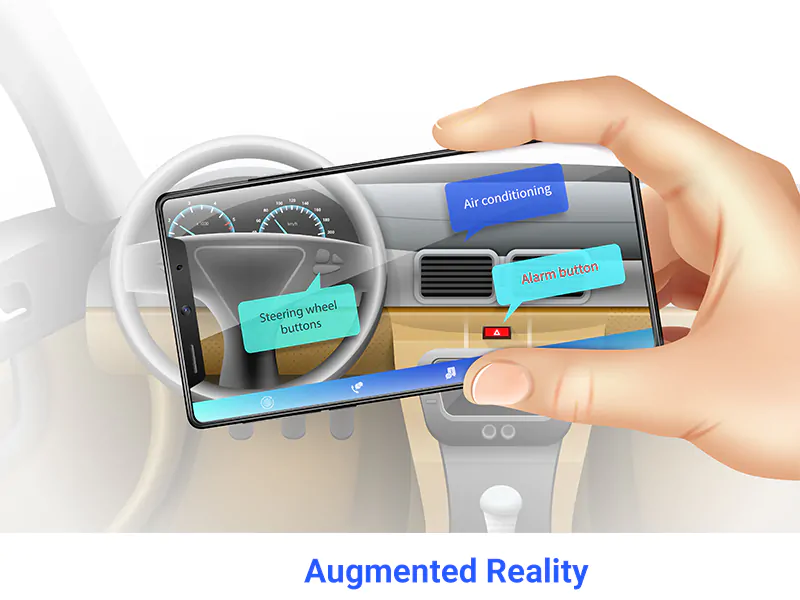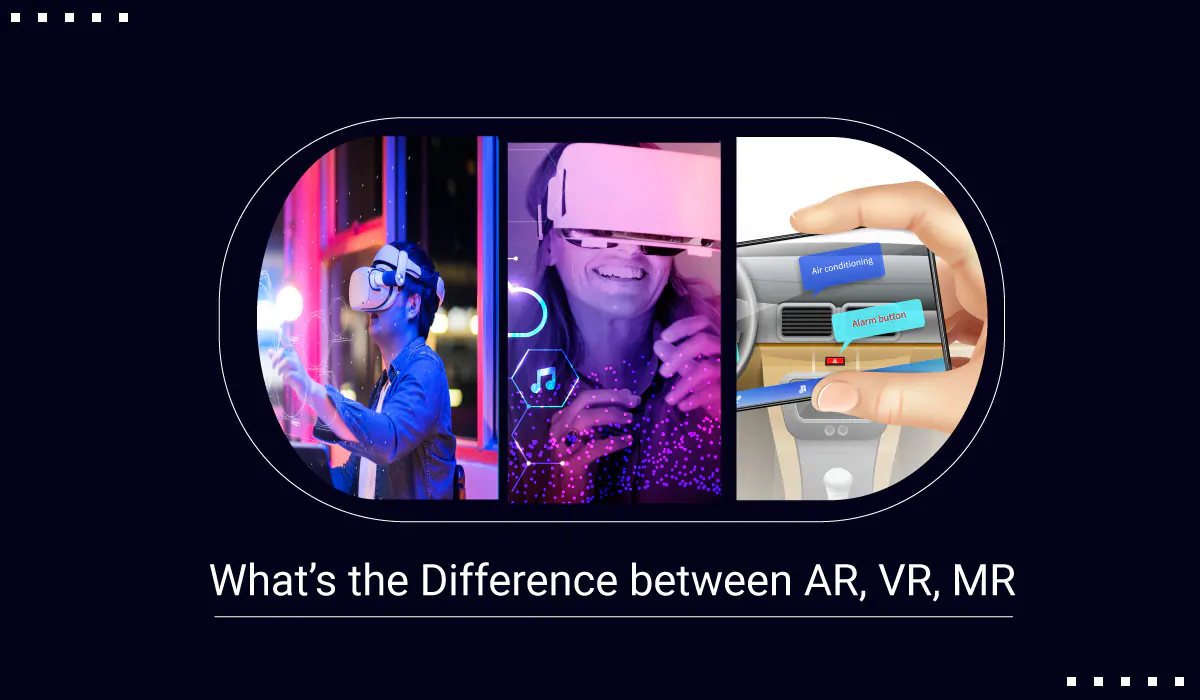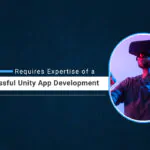Many of us believed that by 2022, we would travel to work in flying automobiles and have robotic housekeepers clean our apartments. We ended up with photography drones and the Roomba. However, many cutting-edge technical advancements are far more astounding than our assumptions would have led us to believe. Today, users may experience and interact with the environment in entirely new ways thanks to virtual reality and its sister technologies, augmented reality, and mixed reality.
However, due to the youth of these developments, most people are still unaware of the distinctions between AR, VR, and MR technology. Not surprisingly, given that they are just now starting to become widely available in a select few of the most cutting-edge and progressive businesses. However, as time goes on, the already present distinctions will become more crucial. So, learning the specifics right away is a terrific strategy to stay in the lead.
Meaning of Continuum of Virtuality
The virtuality continuum is a theoretical framework that can assist you in visualizing and comprehending the differences between current and future technology. For example, consider a spectrum of immersion, with one end representing little immersion and the other representing strong immersion. The technologies can then be classified based on their immersion level.
There is some confusion about the distinctions between virtual reality (VR), augmented reality (AR), and mixed reality (MR). While most people have continued using AR and VR labels to describe the various technologies, these categories are insufficient to appreciate these technologies’ scope properly and exploit their potential. That is why we will investigate them in depth presently.
Let’s begin with the term they all have in common: “reality.” What exactly does the word “reality” mean in the context of AR, VR, and MR?
Meaning Of Reality
Have you ever gotten into a fight with someone over a specific color? Did it appear dark blue to you and black to the other? To some extent, how we absorb information and build reality is unique to each of us—our genetics, prior experiences, and so on—and impacts how we perceive the world.
Humans tend to mix up reality and the actual world, and they struggle to understand why virtual reality feels so genuine even when they know it isn’t.
To comprehend these technologies, you must first understand reality as a construct that each of us creates depending on what we see through our senses, whether that perception originates from the digital or physical world. When we watch movies, the same thing happens. When did you last cry or laugh while watching a movie? Were you aware that what you were seeing was a sham? Yes. Did it make you cry or laugh at the end? If the film was good! Even though you knew you had seen a movie, it felt real. Comprehensive reality technologies provide another layer to this phenomenon, increasing the intensity of the encounters.
The first step is to identify each technology correctly. You’ll be able to apply your UX design skills to these new situations after you understand the opportunities each one provides.
AR- Augmented reality (AR) uses a smartphone’s camera to overlay digital elements on a live scene. It improves our perception of the real world by superimposing computer-generated information over what we perceive. This technique is now widely used in smartphone augmented reality applications that need the user to hold their phone in front of them. The software can show contextual information or give gaming and social experiences that appear to be rooted in the real world by grabbing a picture from the camera and processing it in real time. Snapchat glasses and the game Pokémon Go are two examples of augmented reality experiences.

Applications of Augmented Reality Technology
Try to determine what sectors this technology can be applied to know that you understand what AR is and how it functions. And no, gaming is not included. Although the mobile game Pokémon Go represented a significant advancement, augmented reality technology has much more to offer.
-
-
- Advertising: Augmented reality makes it easier for marketers and advertisers to connect with their target customers. Because AR commercials are interactive and exciting, unlike traditional advertisements, encourage sales and raise brand recognition.
- Manufacturing: New technologies can provide a competitive advantage in this economic sector. Businesses can increase productivity and quality by using augmented reality. How? AR technology can aid manufacturing workers in decreasing human error, saving time, and boosting productivity.
- Retail: Internet shopping is popular among millions of individuals. Online purchasing saves time, money, and convenience. But what if a product doesn’t match the buyer’s expectations when delivered? Customers may virtually inspect or even try on items purchased online thanks to AR apps, which is an excellent answer to this issue.
- Navigation: For navigation, augmented reality is beneficial. Virtual items overlay the real environment and display directions that can guide people to areas. Companies widely use AR to draw customers into their locations.
-
VR- Virtual reality (VR) means a completely immersive experience that isolates the user from the outside world. It entirely replaces a user’s vision, immersing them in a computer-generated virtual environment. With incremental advancements, this type of XR technology has been around for a while. It is mainly utilized for entertainment activities such as gaming, concerts, movies, or sports, but it also makes inroads into the social domain. Immersive entertainment experiences in VR will necessitate capabilities such as an HD rendering pipeline, volumetric capture, 6DoF motion tracking, and facial expression capture. VR is widely utilized as a training tool, as well as in education and healthcare, such as rehabilitation. VR technology frequently focuses on high-quality video and rendering and ultra-low latency to make these experiences viable (and seamless) for the end user. Users can be transported into real-world and imagined situations using VR devices such as the HTC Vive, Oculus Rift, or Google Cardboard, such as the middle of a squawking penguin colony or the back of a dragon.

Real-Life Applications of Virtual Reality
But there are other applications for virtual reality technology than gaming. Check out our list of the most significant VR applications.
-
-
- Education: VR learning materials have the potential to improve education by enhancing immersion and engagement. Businesses and organizations can currently access VR instructional content. Additionally, virtual experiences can assist businesses in training their workforce in addition to schools and institutions.
- Real estate: For decades, real estate brokers have utilized photographs to highlight houses. Agents can now accomplish this goal via using virtual reality, nevertheless. VR is immersive, as opposed to static images, so prospective buyers may take three-dimensional tours and better comprehend the features of each home before visiting in person.
- Healthcare: Because it is so immersive, virtual reality may give a detailed view of the human anatomy, which can help doctors better comprehend the demands of their patients. Additionally useful for surgical training is VR technology. Future surgeons can be trained using a platform created by Medical Realities using 360-degree films and virtual anatomy.
-
MR- Mixed reality (MR) is a technology that allows for the superposition of digital elements in the real-world environment and their interaction. Real-world and digital items interact in a Mixed Reality (MR) experience, including AR and VR features. The user can see and interact with digital and physical aspects of the MR experience. As a result, MR experiences are influenced by their surroundings and alter accordingly. Mixed reality technology is only recently taking off, with Microsoft’s HoloLens being one of the most well-known early examples.

Which Possibilities Does Mixed Reality Offer?
A sophisticated holographic communication gadget will probably be present in every science fiction book you pick up off the shelf. The future envisioned in science fiction is one step closer to reality, thanks to mixed reality. What sectors can mixed reality be used to, then? Let’s name a few sectors where MR has a tonne of promise.
-
-
- Communications: Immersive communication experiences made possible by MR technologies promote more effective teamwork. With headsets, workers may collaborate without being cut off from the outside world.
- Education: Mixed reality is helpful in education, like VR and AR. With MR, pupils can view the real environment and holograms, in contrast to VR. It offers immersive learning opportunities and aids in improving student comprehension. Education in schools and medical training are just two applications of mixed reality.
- Manufacturing: By giving workers real-time help, mixed reality technology streamlines manufacturing procedures. Holographic instructions can be shown right in front of a worker’s eyes, ensuring that they always know what to do. It lowers the possibility of human error while also vastly improving quality. Maintenance and repairs can benefit from MR, especially in fields that demand precision and experience. Manufacturers have already begun putting mixed reality technology to the test.
-
Conclusion
The applications that are currently available for each of these categories are unique. However, they only represent the very beginning because the technology that powers them is still in its infancy. We won’t know where these inventions will lead us until later, but for the time being, we may take advantage of the experiences they are giving us.
The world is becoming technically advanced daily, and various companies are available worldwide to provide robotic solutions. But no brand can be compared with the quality provided by Monarch Innovation. The experts at Monarch Innovation are highly qualified and will provide advanced solutions for a better working system!





